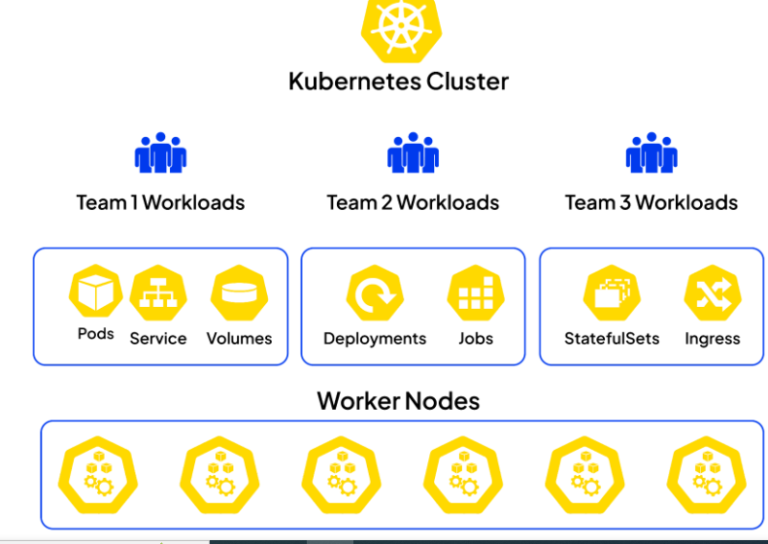How to create effective OKRs to yield the best results
The management sector is thriving these days offering new roles in almost any industry. Why is this position so popular in the market? The main reason is the scope of work that has to be delegated to such people as managers. However, despite the high level of popularity in various areas, the responsibility is increased, too.
No matter what industry a manager works in, there are also tasks and important processes to be in charge of. Hence, the scope of work and the level of duties make this role more demanding on the market. The overall company’s or team’s performance okr software development depends on the professionalism of the managers and their software developer objective. This is a person sets the tasks, checks them, and organizes the process according to the needs of the business, as well as the potential of the employees.
Software Engineering is another critical industry that can’t deal without a proper management routine. The main responsibility of a manager is to help, assist, advise on and lead the team. It can be achieved with many tasks, goals, and objectives. Hence, Objectives and Key Results are the subjects of the article. Here you will learn how OKRs can help promote successful results within the whole team organization.
The need to use OKR development in the work with the Software Engineering Teams
We have decided on the major goal of the software engineer manager. It’s the need to develop the okr team, make it reach its goals, and help provide the best support for the continuous work. But what can help a manager reach the goals? These are the Objectives and Key Results that help ensure a smooth and rewarding work routine.
To understand the abbreviation more, it’s important to check in detail what’s meant by it. Objectives are more global issues to discuss. This is the way the company can see its whole business and envision future projects. To make the OKR practice the most effective, one needs to balance the directives and consensus. Key Results are the final destination or what the team has to achieve as a result of the Objectives set.
There has to be a relevant number of OKRs. If a manager exaggerate with the number of goals, the team can fail hard to achieve them all. Hence, it’s important to set 3 to 5 goals per tier to make them achievable. What’s important to make the OKR process work is to review the progress and give feedback on the result. Otherwise, there will be no point in the teamwork on the project.
OKR or KPI: What’s the difference?
There are two major parameters that can define the work of a team. These are KPIs and OKRs. They might be similar for many, but it’s not the truth. There’s a difference, and it’s a key detail everyone has to keep in mind.
- KPIs refer to the regular goals that were set in the past on a regular basis and have to be managed in the future to track the results. They might change from time to time, but the core KPI idea is clear from the very beginning.
- On the contrary, OKRs start with the general vision of the company and embody a bigger path to success. These are both short-time and long-time objectives that help the team show a massive jump in their work.
At times, KPIs might have something in common with the OKRs, but the general concept is different. And there should be a more or less strict line to help software engineer managers see it.
SMART and FAST OKRs review
When you work in a team and experience a certain level of stigma, there’s always a question about the performance of each employee. Hence, the manager needs to decide whether the work is done properly or there should be something changed. In this case, managers start choosing between short-term realistic goals and long-term ambitious ones. In this case, we deal with the two major concepts — SMART and FAST OKRs.
SMART refers to the Specific, Measurable, Achievable, Realistic, and Timely. This is usually a short-term perspective that helps teams set clear objectives and achieve success fast in small patches. Another abbreviation is FAST which means Frequently discussed, Ambitious, Specific, and Transparent to everyone.
Project Management boils down to asking which questions have to be posed and answered. The main goal for both of these abbreviations is to help a team set the correct objectives and follow them consequently for the top-rated result. It’s not a big deal what one calls the process. If the difference explained in the paragraphs above helps you manage the team, it makes the OKRs implementation even a more effective tool.
Craft ambitious OKR for Teams
Defining global ambitious OKRs is simple because it doesn’t usually imply a detailed approach, but rather generic. However, when it comes to individual or team objectives, there are always questions. In this case, a Software Engineering manager has to start with simple tasks.
- First of all, one needs to use smart goals software and write the first statement that covers the general objective for the team.
- The second step is more detailed because it requires writing a couple of achievable results or KPIs.
- The last portion is the deadlines. The team or an individual needs time frames to work hard and keep up with good results on time. Hence, the timing is everything and of the same importance, as the previous two options.
It’s a critical thing to manage a consequent plan when deciding on the OKRs. If a manager fails the steps, the whole team can work in the wrong way failing the project over and over again. This is why detailed research and work on the task objectives are mainly the responsibility of the manager.
How business wins from the OKR implementation
You may wonder why there’s such a huge need to implement OKRs in the process of common work on the project. One can find a plethora of answers to the question, however, there’s one main issue to point out. It’s the general focus that a team can develop and reach out to.
By setting smaller software development KPIs examples, a team can envision the global objective and seek the final result by doing smaller, clearer steps. This is what helps individual employees understand their results and contribution to the process. Individual OKRs are supposed to make the working process more amusing and coherent, transforming a dull and tiring routine into a journey.
When there’s a project with deadlines and a contractor, there should be a team ruled by an efficient manager. And the OKR is the tool to assist with the process and promote the best result in the future. With the successful implementation of the OKRs, a team can invest in the general work of the company and help achieve global goals with an easier and more understandable approach.



